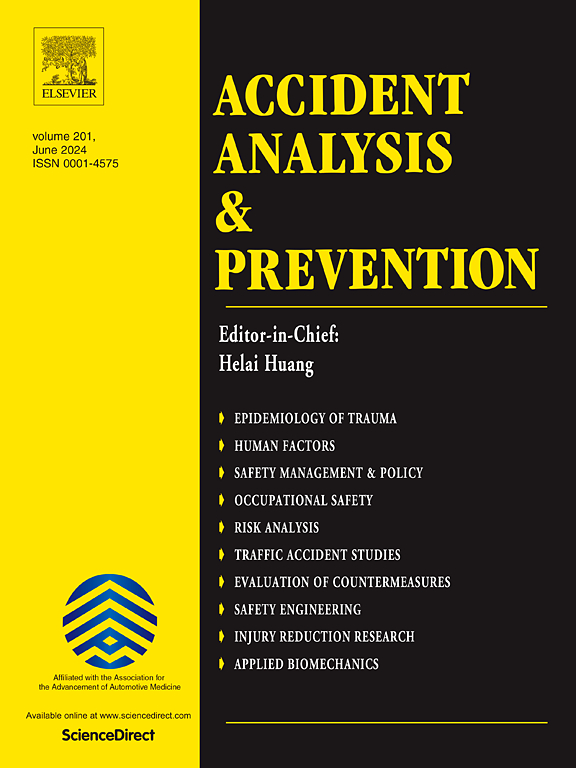Learnable Operational Design Condition monitor for failure prediction in autonomous driving
IF 6.2
1区 工程技术
Q1 ERGONOMICS
引用次数: 0
Abstract
Autonomous vehicle accidents frequently originate from violations of Operational Design Conditions (ODC)—the predefined operational limits of vehicle states, environmental factors, and driver capabilities. ODC violation indicates a high probability of impending functional failure under current operational scenarios, where failure denotes the system’s inability to achieve designated performance thresholds or maintain safety-critical constraints. Therefore, designing and continuously monitoring the boundary states of ODC during system operation constitutes a critical imperative to prevent system failures, ensure operational safety, and mitigate autonomous vehicle accidents. However, prevailing ODC monitoring methods primarily rely on first-order logic checklists, failing to capture emergent risks from parameter interactions. Therefore, this paper establishes an end-to-end methodological framework for constructing a learnable ODC monitor termed ODCNet to realize failure prediction. The architecture first projects operational states into unified latent representations, then derives probabilistic boundary estimates through neural inference, and finally calibrates residual errors via hybrid Gaussian Process regression. Additionally, an adaptive active learning mechanism continuously refines boundary precision through targeted testing of high-uncertainty scenarios. The validation through intersection, lane-keeping, and vehicle detection case studies demonstrates the failure prediction performance of the ODC monitor that precedes accidents.
面向自动驾驶故障预测的可学习运行设计状态监视器
自动驾驶汽车事故通常源于违反操作设计条件(ODC),即车辆状态、环境因素和驾驶员能力的预定义操作限制。违反ODC表示在当前操作场景下即将发生功能故障的可能性很高,其中故障表示系统无法达到指定的性能阈值或维持安全关键约束。因此,在系统运行过程中,设计并持续监测ODC的边界状态对于防止系统故障、确保运行安全以及减轻自动驾驶车辆事故至关重要。然而,流行的ODC监控方法主要依赖于一阶逻辑检查表,无法捕获参数交互中的紧急风险。因此,本文建立了一个端到端的方法框架,用于构建可学习的ODC监视器ODCNet,以实现故障预测。该架构首先将操作状态投影到统一的潜在表示中,然后通过神经推理得到概率边界估计,最后通过混合高斯过程回归校准残差。此外,自适应主动学习机制通过对高不确定性场景的针对性测试,不断细化边界精度。通过交叉路口、车道保持和车辆检测案例研究验证了ODC监控器在事故发生前的故障预测性能。
本文章由计算机程序翻译,如有差异,请以英文原文为准。
求助全文
约1分钟内获得全文
求助全文
来源期刊

Accident; analysis and prevention
Multiple-
CiteScore
11.90
自引率
16.90%
发文量
264
审稿时长
48 days
期刊介绍:
Accident Analysis & Prevention provides wide coverage of the general areas relating to accidental injury and damage, including the pre-injury and immediate post-injury phases. Published papers deal with medical, legal, economic, educational, behavioral, theoretical or empirical aspects of transportation accidents, as well as with accidents at other sites. Selected topics within the scope of the Journal may include: studies of human, environmental and vehicular factors influencing the occurrence, type and severity of accidents and injury; the design, implementation and evaluation of countermeasures; biomechanics of impact and human tolerance limits to injury; modelling and statistical analysis of accident data; policy, planning and decision-making in safety.
 求助内容:
求助内容: 应助结果提醒方式:
应助结果提醒方式:


